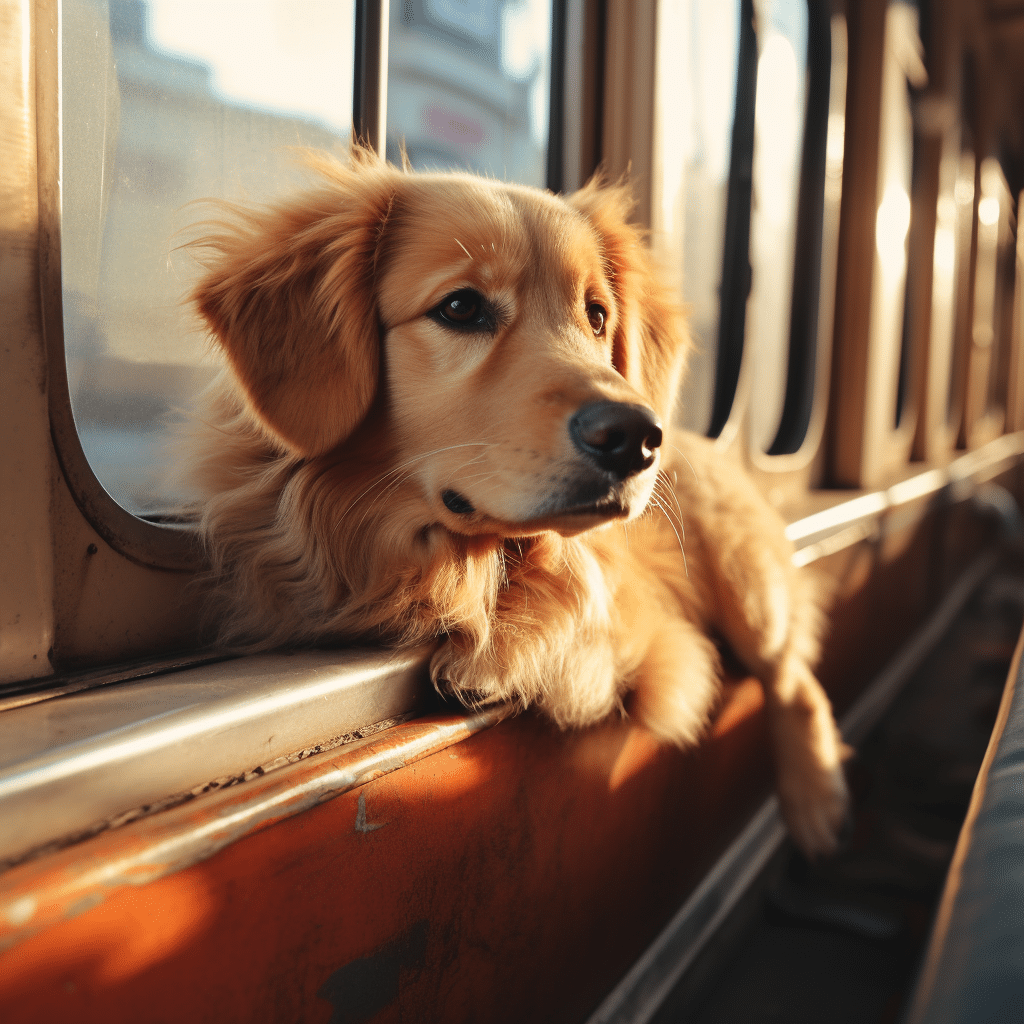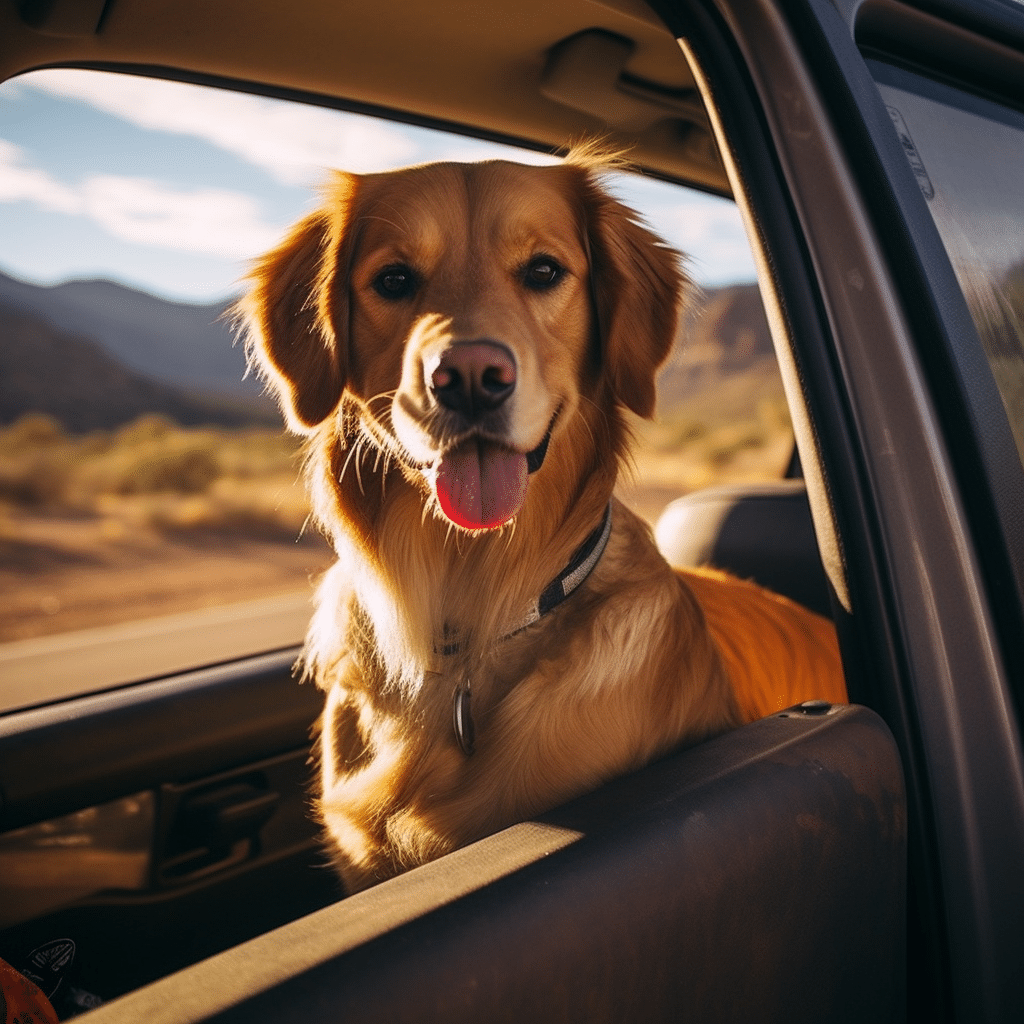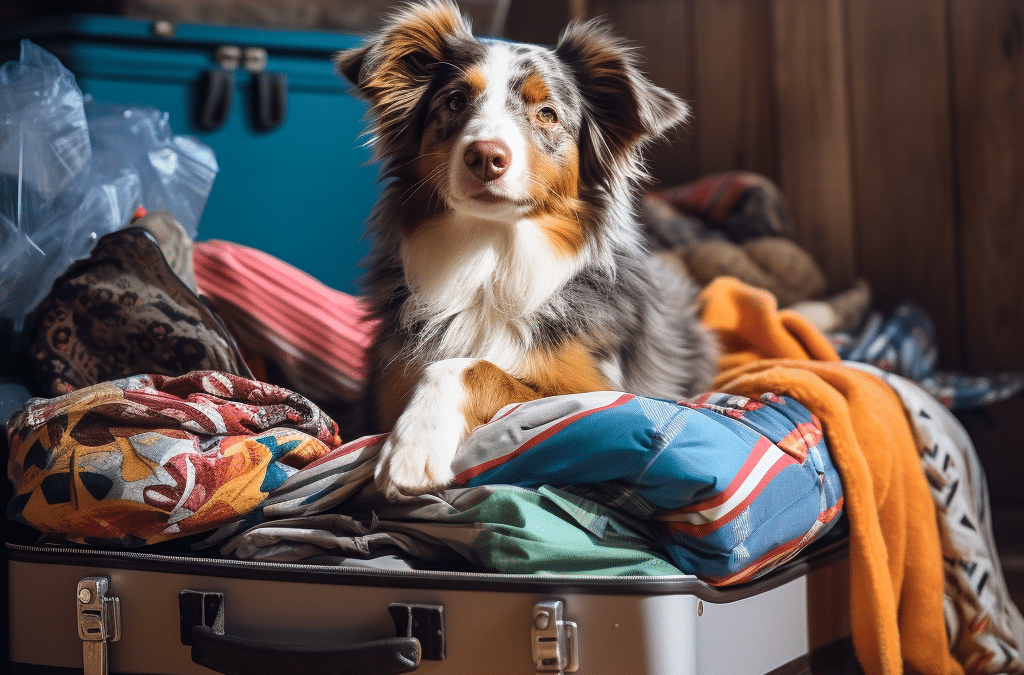Ultimate Guide: Traveling with Your Dog
Who would have believed that your canine companion, an inseparable part of your quotidian life, could also be a great globetrotting partner? You could enjoy the sunsets on sandy beaches or the cool weather of the mountains, all in the delightful company of your dog. Yet, stepping out of your comfort zone with your four-legged friend might not always be a walk in the park. Dog travel preparation is thus vital to ensure a seamless journey.
Traveling with a dog is akin to taking a younger sibling. It requires meticulous planning and an extra bag for the canine essentials. Like children, dogs, too, could become a little anxious and behave unexpectedly in alien situations. So, besides packing their favorite toys and snacks, preparing your dog emotionally for the journey is equally paramount. Collars, leashes, dog food – are just the tip of the iceberg. What if your furry friend gets restless or falls sick during travel? Going through several ‘what-ifs’ and preparing for them well in advance will minimize the pitfalls of traveling with pets. Being over-prepared is always better, especially when traveling with your dog.
Traveling with dogs poses challenges; however, the glee of having your pet dog frolicking around is all worth it. Watching your canine pal curiously explore new spaces, running around freely in the wild or making friends with locals truly enriches your travel experience. The bond of companionship with your dog strengthens manifold, making the entire odyssey more meaningful. Cherishing these precious memories is truly one of the benefits of traveling with dogs. So, buckle up, start planning, and prepare for an exciting, tail-wagging adventure. Let’s explore the manifold benefits of traveling with your pet dog.
What Should You Pack for Your Dog’s Travel?

A trip with your furry friend can be an adventure filled with fun and bonding experiences. To make your journey more rewarding and stress-free, we’ve crafted a comprehensive checklist to guide you in packing for your dog. This essential dog travel packing list will ensure your dog remains comfortable, healthy, and safe during the trip.
Key Veterinary Papers and Identification Essentials
First and foremost, your dog’s identification and veterinary papers are a non-negotiable part of your packing. These represent the very foundation of preparing pets for travel. Ensure your pet’s tag has your current contact information. Microchipping is also encouraged for added safety. The veterinary papers should comprise vaccination records, health certificates, and prescriptions.
Food, Water, and Related Items
Pack ample food and water for your pet dog to keep it well-fed and hydrated. A sudden change in diet could upset your dog’s stomach, something you’d want to avoid during travel. Always bring a portable water bowl to make hydration easier on the go.
Cleanliness Supplies
While traveling, you want to keep your environment clean and prevent germs from spreading. Pack poop bags, wet wipes, and a travel-size waste scoop. A dog blanket can also come in handy to protect your car seats and hotel furniture.
First Aid Essentials
An emergency can strike at any moment, so it’s critical to have a doggy first-aid kit handy. This should include bandages, antiseptic, a tick remover, and a digital thermometer. You can also discuss a canine travel sickness medication with your vet if your dog gets motion sickness.
Crucial Travel Gear
Leashes, harnesses, and carriers are all part of the essential travel gear. A car safety harness and a secure, well-ventilated carrier can keep your dog safe during travel.
How to Prepare Your Dog for Extended Travel?
Training Your Dog Mentally For the Trip
Mental preparation plays an essential role in **preparing pets for travel**. If your dog isn’t used to riding in a vehicle, initially acclimate them by taking a few short trips.
Physical Preparedness
Ensure your dog is healthy enough for the journey. A check-up with the vet before you hit the road wouldn’t go amiss. Keep up your pet’s regular exercise routine to have them in good physical shape for the trip.
Desensitize Your Dog to Travel-Related Stimuli
Help your dog get comfortable with the notion of traveling. Familiarize them with their carrier and other travel accessories. Create a comfortable environment within the vehicle, using a favorite blanket or toy to offer a sense of home and security.
How Can You Keep Your Dog Composed and Occupied During the Journey?
Seeing your pet anxious or bored during the trip might be worrying. Here is how you can deal with it:
Natural Remedies and Techniques to Reduce Stress
From pheromone sprays to calming music, numerous ways exist to soothe a nervous pet. These techniques can be very effective in keeping your dog composed during a journey.
Fun Ways to Distract and Entertain Your Dog
Consider bringing along your pet’s favorite toys. Chew toys can be particularly helpful as they occupy your pet for prolonged periods. Treats can also be used as a distraction when needed.
Taking your beloved pooch along on a trip doesn’t need to be stressful. By adhering to these tried and tested tips for traveling with dogs and equipping yourself with an essential dog travel packing list, you can make the journey enjoyable for both of you.
Even with all these preparations, determining the best mode of transport for your dog’s journey is crucial. Here’s how you can do that in our next section, “##Understanding Best Modes of Transport for Dogs.” Whether you fly, drive or travel by train, each mode has special considerations to ensure a safe and comfortable ride for your furry friend.
Understanding Best Modes of Transport for Dogs

Traveling with your furry friend can transform every journey into an exciting adventure. However, it’s vital to pick the correct mode of transport. Factors include your dog’s size, behavior, and reaction to new environments. Be it by car, plane, or train, each mode has pros and cons.
By Car
Traveling by car offers great flexibility and control over the journey. It enables regular bathroom breaks and the freedom to feed your dog at your convenience. It is crucial to dog-proof the car and secure your pet with a harness or carrier for everyone’s safety.
By Plane
Air travel has dedicated pet travel regulations to guide you. For a safe and comfortable flight experience, crate training is a must. Always check the airline’s pet policies before boarding.
By Train
Some trains accept pets, although regulations can be strict and variable. Make sure to check in advance, especially on longer trips. The bonus is knowing your pet is journeying in a stable, ground-level environment.
Cruises or ferries are also viable options for traveling with dogs. However, pet policies on these modes vary widely and should be verified beforehand.
What Should You Bear in Mind About Air Travel with Dogs?
When flying with dogs, your first checkpoint should be the airline’s pet policies. Various airlines have different age and size restrictions. As per an [AVMA report, pets who are very young, elderly, or health-compromised might not be fit for air travel.
Health and safety are paramount. Certain dog breeds with squashed faces (like Bulldogs and Pugs) can encounter respiratory issues at high altitudes. Dogs can also experience anxiety during a flight. To tackle this, getting your dog used to their travel crate before the journey is extremely useful.
Which are the Top Dog-Friendly Airlines?
Deciding on the best transport for dogs can be overwhelming when you don’t know where to start. Each airline has different pet policies, providing unique amenities to comfort your dog.
JetBlue, for example, has a special program called JetPaws, providing their furry passengers with a special Pet Travel Guide. On the other hand, American Airlines allows small pets to travel in the cabin on most domestic flights.
Size, breed, and health conditions significantly influence the choice of airline. Some airlines refuse to transport certain breeds, like the brachycephalic (short-nosed) breeds mentioned earlier, due to the risk of health issues.
Delta Airlines and Southwest are known to be more lenient with dog breeds and sizes. However, always double-check as policies may vary.
Service animals have separate policies entirely. Airlines such as Alaska Airlines offer these pets the opportunity to travel in the cabin at no extra charge under certain situations.
Ultimately, considering all these factors will ensure a smooth and pleasant journey for you and your canine companion.
How to Find Pet-Friendly Accommodation?
The next vital step on the journey with your pet involves finding an accommodation that not just permits but welcomes dogs. Several online resources can guide you in securing a pet-friendly alternative significantly easier. Plan to ensure an enjoyable stay for your furry friend, too. Let’s continue this conversation in the next section, focusing on “How to Find Pet-Friendly Accommodation”. Stay tuned!
Conclusion
As we wrap up our ultimate guide to traveling safely with your dog, we must revisit the key things we’ve learned. Seven out of ten pet owners agree that proper preparation is the first step to taking a successful trip with your beloved canine. This includes ensuring Fido is up to date on his vaccinations and well-trained to behave on the journey.
Remember, every dog is unique, and traveling might be a completely new experience for them. As a pet owner, you have a big role in ensuring they feel safe and comfortable throughout the trip. Practice patience with your furry friend and praise them as they adapt to this new adventure.
Moreover, whether you’re jet-setting overseas or taking a quick road trip, your dog’s safety and comfort should never be compromised. Always scout ahead, prepare for surprises and pack enough food, water, toys, and other essentials. If it’s their first time traveling, gradually acclimate them to the new experience, starting with short trips before taking longer ones.
We all have stories to share, don’t we? So, whether it’s a hilarious incident at the airport or an unforgettable hiking trail exploration, we’d love to hear about your experiences. Share your pet owner travel experiences* with the community and spread the joy of **traveling with dogs**.
Who knows? Your story might encourage another pet owner to pack up the pooch and hit the road! So why wait? Start planning your next trip with your faithful friend.
Frequently Asked Questions about Traveling with Dogs
Q1: Can I take my dog on an airplane?
Yes, most airlines will allow dogs to travel, but rules and regulations vary. Small dogs may be allowed in the cabin, while larger dogs may have to travel in the cargo section. Be sure to check with your airline for specific requirements and restrictions.
Q2: How do I prepare my dog for a long car travel?
Before traveling, get your dog used to the car by taking them on short trips. Pack a doggy travel kit, including food, water, leash, waste bags, medication, and any comfort items. Ensure your dog is properly restrained during the journey to ensure their safety.
Q3: Should I feed my dog before we travel?
Avoid feeding your dog a large meal before traveling. A light meal three to four hours before departure is advised. Always make sure your dog has access to water.
Q4: Is it okay for my dog to roam freely in the car?
Your dog should be restrained during car travel for the safety of both the driver and the dog. This can be achieved with a seat belt harness, pet carrier, or dog cage.
Q5: Can dogs experience travel-sickness?
Yes, dogs can suffer from motion sickness just like humans. Symptoms include drooling, listlessness, unease, and vomiting. If your dog suffers from travel sickness, consult your vet for treatment options.
Q6: Do hotels allow dogs?
Many hotels are pet-friendly, but always check their pet policy before booking. Some hotels may charge an extra fee for accommodating pets, while others may have restrictions on the size or breed of dog.
Q7: How do I keep my dog calm during travel?
Consult with your vet about using dog-approved calming aids or medications. Also, bringing a favorite toy or blanket can help. Allowing your dog to exercise before travel can also help to calm them.
Q8: Can my dog travel internationally?
Yes, but requirements for international pet travel vary. Your pet will need a health certificate from your vet and possibly additional vaccinations or documents, depending on your destination.
Q9: Can I leave my dog in the car while I take a break?
Never leave your dog alone in a parked car, especially in hot or cold weather. The temperature inside a parked car can reach dangerous levels quickly and can be fatal for your dog.
Q10: What if my dog needs to relieve itself during the journey?
Take regular breaks for your dog to stretch, move around, and relieve. This can prevent discomfort and accidents. Plan your route with this in mind, choosing rest stops, parks or pet-friendly locations.



Recent Comments